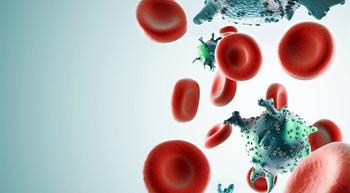
Jakafi-Novel Therapy Combo Improves Symptom Burden in Patients with Myelofibrosis
Treatment with daily Jakafi and parsaclisib improved spleen volume reduction and symptom burden in patients with myelofibrosis who had previously failed to achieve significant response to single-agent Jakafi.
Treatment with Jakafi (ruxolitinib) plus the novel oral inhibitor parsaclisib induced improvements in spleen volume reduction and symptom burden in patients with myelofibrosis who had previously experienced limited responses to standard dose of single-agent Jakafi, according to data from a phase 2 study presented at a recent medical conference.
The data, which were presented during the virtual AACR Annual Meeting 2021, also showed that responses to the Jakafi-parsaclisib combination were durable and occurred early during treatment. The combination also appeared well-tolerated by patients with myeloproliferative neoplasms (MPNs).
Previous research has shown that Jakafi improves outcomes such as symptom burden and
Preclinical research has suggested that activating the phosphoinositide 3-kinase (PI3K) pathway could be beneficial for these patients, which warranted the use of the PI3K inhibitor, parsaclisib.
A total of 53 patients aged 18 years or older with a primary or secondary diagnosis of myelofibrosis were enrolled onto the phase 2 study to test the safety and efficacy of the Jakafi and parsaclisib combination. Patients had to have a minimal response to single-agent Jakafi after receiving treatment of 5 milligrams (mg) to 25 mg twice a day for at least six weeks to be included in the study. Patients were required, however, to have achieved stable disease that lasted at least eight weeks on prior treatment with Jakafi.
Once enrolled on the study and while receiving a stable dose of Jakafi, one group of patients received parsaclisib at 10 mg or 20 mg once a day for eight weeks and the same dose once a week in the following weeks. The other group of patients received 5 mg or 20 mg once a day for eight weeks and 5 mg once a day afterward.
The median time since the initial diagnosis of myelofibrosis was 31.2 months and the duration of prior Jakafi in patients was a median of 18 months.
Measuring change of spleen volume from start of trial to week 12, determined by imaging, was the main goal of the study. Other goals included measuring a change in spleen volume from beginning of the trial to week 24, as well as a change in symptom burden from start of the trial to weeks 12 and 24 and safety of the combination.
Patients who received all daily parsaclisib (20 patients) experienced a 15.4% reduction in spleen volume compared to a 2.3% reduction in those treated with daily and weekly doses (33 patients). At 24 weeks, patients who received a daily dose experienced a 25.4% reduction in spleen volume compared to 2.5% reduction in those who received daily and weekly doses of treatment.
“Patients who received all daily parsaclisib dosing demonstrated a continued reduction in splenic length up to 24 weeks,” study author Dr. Abdulraheem Yacoub, an associate professor of medicine at the University of Kansas Medical Center, said in a presentation of the data. “By contrast, patients receiving the daily parsaclisib dosing appeared to plateau after switching to weekly dosing at week eight.”
He also noted that patients who received an all daily dosing regimen were more likely to report improvements in symptoms at weeks 12 and 24. There was a 50% or greater reduction in symptoms in 31% of the patients who received the all-daily regimen compared to 15% of the daily/weekly group at 12 weeks. Moreover, at 24 weeks, the same reduction occurred in 17% of the all-daily regimen compared to 4% in the daily/weekly group.
The most common hematologic treatment-emergent side effects to occur in the all-daily group included cough (25%) and nausea (20%). The daily/weekly group experienced more side effects, which included diarrhea (33%), nausea (30%) and fatigue (30%).
Approximately 2% of patients experienced serious side effects which included urinary tract infections in three patients and two occurrences each of pneumonia, fall and fever. One death occurred in the all-daily dosing population and six deaths were reported in the daily/weekly group.
Results of this study have spurred the development of a phase 3 study assessing parsaclisib as an add-on to, or in combination with, Jakafi as front-line treatment of patients with myelofibrosis.
A version of this story originally appeared on OncLive® as, “
For more news on cancer updates, research and education, don’t forget to




